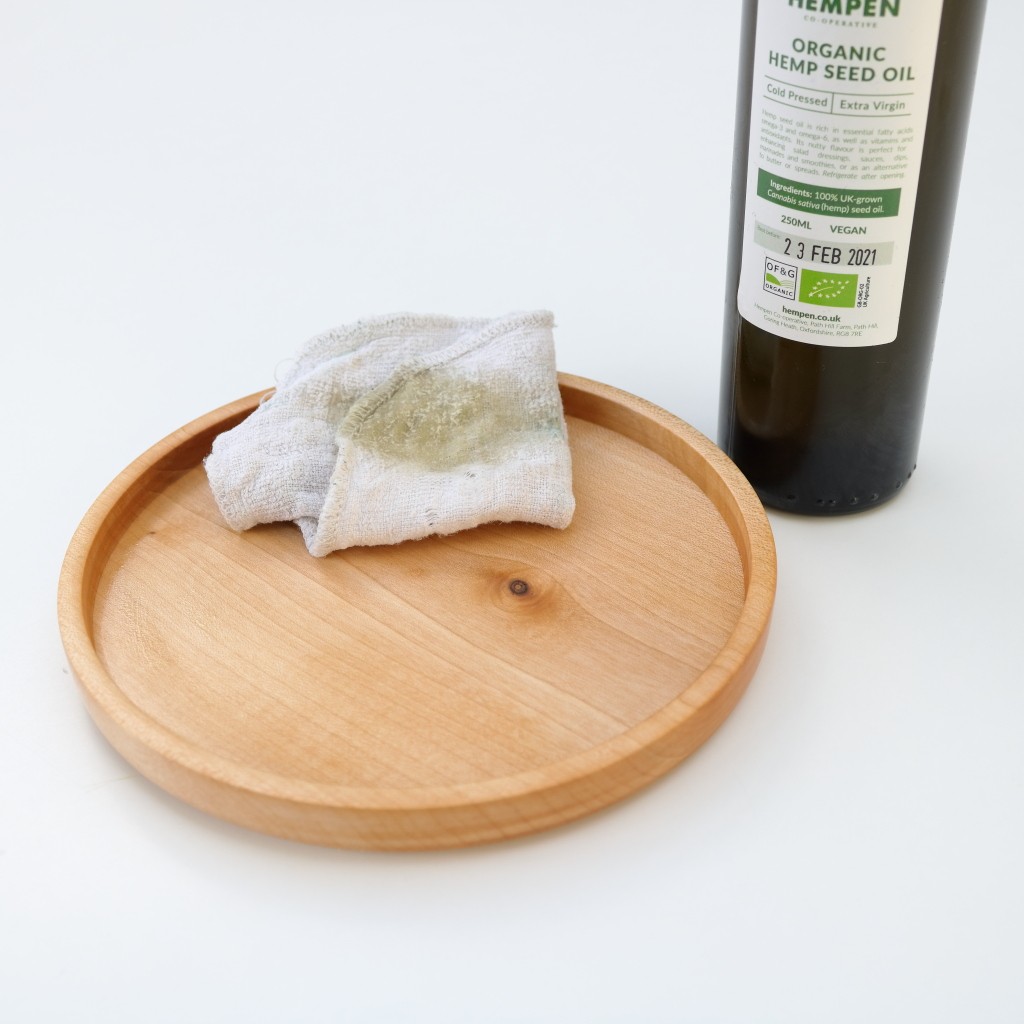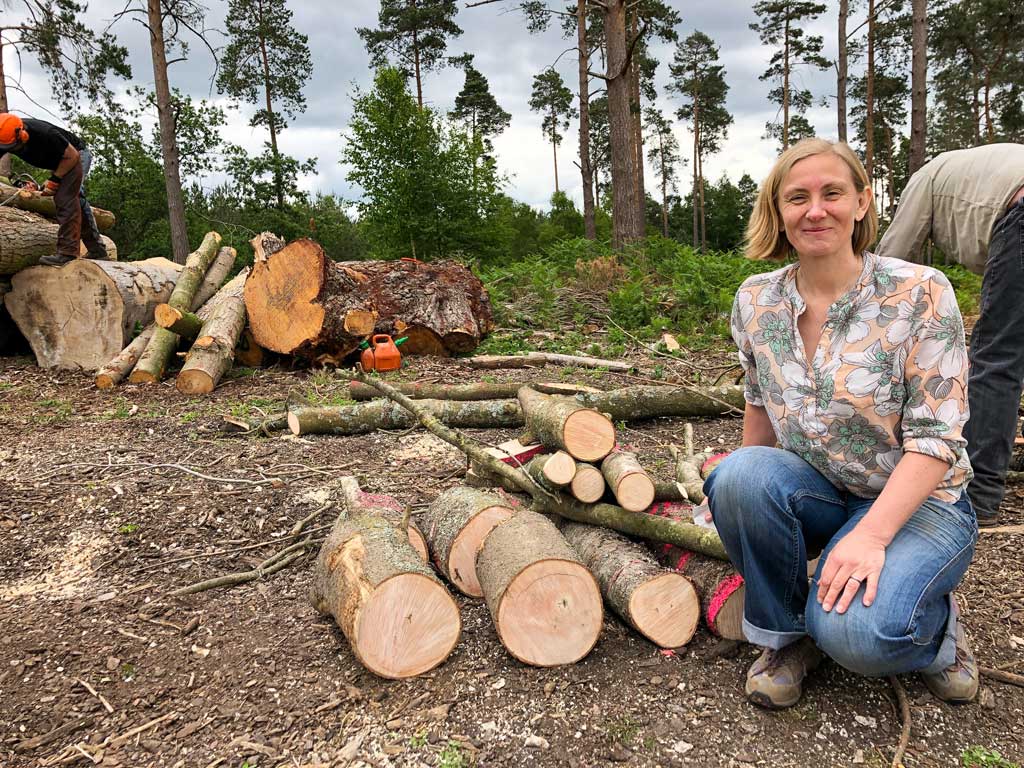There’s a long history of wooden dishes in Britain dating right back to the Iron Age. In fact, wood was the most popular choice of material for tableware all the way up until the late 17th and early 18th centuries. This was due to the advent of inexpensive glazed pottery.
However recently, wooden plates and bowls are gaining in popularity again as an eco friendly tableware choice. But are they the right choice for you? To help you decide I’m going to outline the benefits and drawbacks of eating off wooden dishes here.
When choosing to use wooden dishes you’re also making the decision not to choose another type of dinnerware. So as well as looking at wood’s beneficial characteristics, I’ll compare it to the other popular tableware materials plastic and china, as well as the more eco friendly coconut bowl.
natural
First off, wood’s a natural material. This means it’s biodegradable and renewable. Biodegradable means it’s easily broken down and recycled by nature. It will return to the soil, adding nutrients, if left outside for a few years. Renewable means it can be replaced by growing more. Therefore, provided we replace the trees we use with the same amount then wood is a sustainable material.
However, wooden bowls have often been treated with an acrylic laquer finish which essentially ruins their ‘natural’ status. Acrylic is a kind of plastic so take care to check what finish is used on any woodware you’re considering buying.

calming
Handling a wood bowl, plate or cup is a very tactile, satisfying experience. Research has shown that we have a deep connection with the natural world and respond positively to biophilic design.* Using wooden plates, bowls and dishes can strengthen this connection to nature in our daily lives. And as a consequence, we can increase our sense of well being.
“* Biophilic design is a concept used within the building industry to increase occupant connectivity to the natural environment through the use of direct nature, indirect nature, and space and place conditions.”
Wikipedia
insulating
It may come as a surprise to some, but wooden bowls are suitable for hot as well as cold food. As a natural insulator wood helps to keep your food or drink warm whilst protecting your hands from extreme heat. Holding a wooden bowl full of porridge on a chilly morning is a wonderful experience.

long lasting
Another great characteristic of wood is its durability. Good quality wooden tableware is exceptionally long lasting and ages well. If cared for, woodware will retain its good looks year after year. It’s toughness also means it can withstand the rigours of daily family mealtimes. Breakages and chips are rare.

3 Bears Woodware
A versatile collection of sustainable wooden plates and bowls handmade in the UK for everyday family use. The healthy alternative to plastic tableware and ideal for picnics.
Certified by The Vegan Society.
advantages over plastic (including melamine)
eco friendly
As we already know, wood’s a natural material. As such, it’s part of the earth’s cycle and decomposes to be naturally recycled. All forms of plastic, both synthetic and biobased, are not natural. They were created through industrial chemical processes, using non renewable resources, that generate toxic emissions. It’s widely acknowledged that plastic is a real problem for the planet and wildlife. This is because once discarded it takes 100’s of years to break down. Unfortunately, even after all that time it cannot fully decompose but just breaks into smaller and smaller pieces to become micro plastics. These micro plastics are now seen as a major menace to wildlife as they are ingested and have now found their way into the human food chain. Managing plastic waste by incinerating it causes other environmental problems. The small percentage that’s recycled is just using more energy and chemicals, so every stage of plastics life span has a negative impact on the planet. That’s why buying less plastic is a great way to help the planet .
In contrast, the production and processing of wood uses far, far less energy , giving wooden products a significantly lower carbon footprint than plastic. Just remember to check what type of finish has been used on any wooden plates and bowls you’re considering purchasing. If an acrylic laquer, or similar has been used, then this is a type of plastic and consequently not eco friendly.
clean
It’s a misconception that wooden surfaces are dirtier or somehow not as clean as plastic. Dr Dean Cliver, Professor of Food Safety at the University of California, undertook research comparing bacteria levels on wooden and plastic chopping boards. His full report on food safety and woodware can be read here. This and other studies*, found that wood actually retains less bacteria than plastic. It has also been proved that as well as not retaining bacteria wood itself is naturally antibacterial. This means it’s actually cleaner and safer to use wooden plates than plastic ones.
“our early experiments showed that wood generally yielded fewer
bacteria than did plastic after contamination.”
Dr D. O. Cliver
healthy
The negative impact of plastic on humans is becoming increasingly alarming. At every stage of its life plastic is damaging to our health. During its extraction and manufacture it releases emissions that include Benzene, PAH’s, VOC’s and 170+ toxic chemicals. While using plastic products there are risks of ingestion and/or inhalation of microplastic particles and hundreds of toxic substances. This exposure can lead to inflammation, genotoxicity, oxidative stress, apoptosis, and necrosis that are linked to negative health outcomes ranging from cardiovascular disease to cancer and autoimmune conditions. Furthermore, plastic waste management like incineration releases toxic substances including heavy metals such as lead and mercury, acid gases and particulate matter, which can enter air, water, and soil causing both direct and indirect health risks for workers and nearby communities.
If you’d like a full explanation of plastics affect on our health read the plastic pollution coalition’s helpful summary of the 2019 report produced by CIEL.
In stark contrast to plastic. wood has no negative impact on our health. In fact, it has actually been show to have a positive impact as we find wood a calming material which reduces symptoms of stress and improves mental well being.*
advantages over china and pottery
durable
The obvious advantage wood has over china is it’s toughness. Drop a piece of china and it’s likely to shatter into lots of little fragments. China also chips easily which is very annoying on an otherwise perfectly usable plate, cup or bowl. Wood on the other hand, is very durable and copes well with rough handling. Drop it and watch it bounce.
quiet
An often over looked quality of wood is how peaceful it is to eat from. There isn’t the clinking and scraping you get using china or glass. This makes for a subtle difference in the quality of the dining experience.
advantages over coconut
heat resistant
Other eco friendly tableware such as coconut bowls are not suitable for hot food as they can crack. Wooden bowls have no such issues and can be used with hot foods such as porridge, soup, stews and even curries. Wood is a natural insulator so it keeps your food warm while protecting your hands from excess heat.
carbon footprint
Choosing wooden bowls that are made locally means that the carbon footprint from shipping can be avoided. This can’t be avoided with coconut bowls since they are produced in the Far East and have to be transported to the West in shipping containers or planes.
ethical
If something’s very cheap the chances are it isn’t being made ethically. So make sure, whatever type of product you’re buying that you know how it was made and that the people who made it are given a living wage and fair treatment.
shop love heartwood’s woodware collection
-
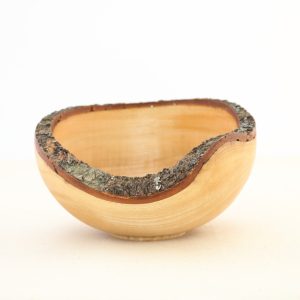 natural edged wooden bowl£65.00
natural edged wooden bowl£65.00 -
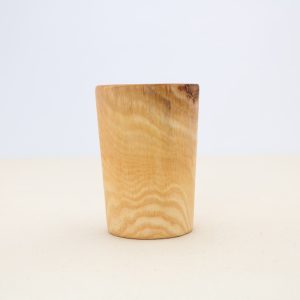 wooden cups£38.00 – £171.00
wooden cups£38.00 – £171.00 -
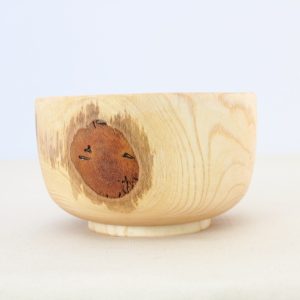 daddy bear large wooden plates and bowls£28.00 – £108.00
daddy bear large wooden plates and bowls£28.00 – £108.00 -
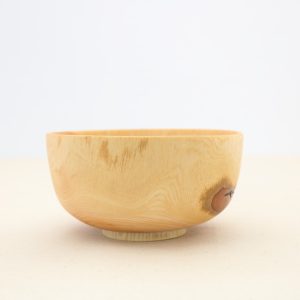 mummy bear wooden bowl and plate set£40.00 – £55.00
mummy bear wooden bowl and plate set£40.00 – £55.00 -
 goldilocks oval wooden food bowls£50.00
goldilocks oval wooden food bowls£50.00 -
 baby bear small wooden bowls and plates£20.00 – £30.00
baby bear small wooden bowls and plates£20.00 – £30.00 -
 Eco Friendly Gift Cards£25.00 – £342.00
Eco Friendly Gift Cards£25.00 – £342.00 -
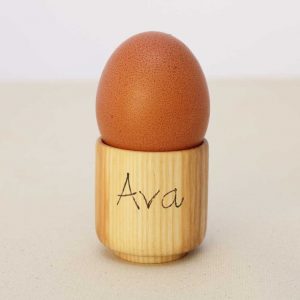 Personalised Egg Cups£9.00 – £45.00
Personalised Egg Cups£9.00 – £45.00
the downsides of wooden tableware
Now before you make up your mind if wooden tableware’s for you there’s a few downsides to consider. Thinking about these points should help you to decide if its right for you and your family.
not microwaveable
Sadly wood isn’t microwavable. Although wood won’t spark dramatically like metal in a microwave, it does have a small water content and this will cause the item to warm up. Eventually it will crack and warp as it dries out. There are work arounds to this however, like using a different container for reheating food.
not dishwashable
Wooden plates and bowls are also not dishwasher friendly. So will you or someone in the family be happy to wash them up in the sink? It’s not recommended that wooden items are left to soak so it’s best to wash them up soon after use. Dunk them in a bowl of hot soapy water and use a bristle brush. Then simply leave them to dry on the drainer.
stains
Wood can stain and absorb smells, especially when it comes into contact with strongly coloured foods like beetroot, pasta sauce or drinks like tea. However, acidic foods like tomato based sauces or greasy foods will not damage the wood or weaken it. Over time stains will dull down and become part of the wood’s patina. This is part of wood’s graceful ageing process. To address the smell issue you might consider using a dedicated cup for tea/coffee or having separate bowls for breakfast and dinner.
needs care
Wood isn’t maintenance free. Woodware needs a bit of looking after as it becomes dull with use. Luckily, all you need to do is rub your plates and bowls with some food safe oil every 5-6 months or when they’re looking drab. It’s amazing how the oil revives them and buffs to a lovely soft sheen.
not cheap
Good quality woodenware is not cheap. However, it is very good value when you consider how long lasting it is. So if you choose to buy wooden dishes consider it an investment which will save money in the long run. Buying one or two pieces initially is a good way to try out woodware and see if it’s for you. Then if you decide it is you can add more items to your collection over time, or as your family grows, until you have created your perfect dining set.
summary
In conclusion there’s lots of benefits to choosing wooden dishes. They’re natural, calming, eco friendly, clean, healthy and durable. Moreover, if properly cared for they’ll last for generations. But above all, they’re wonderful to eat from creating a tactile, quiet and satisfying eating experience.
” Buy less,
choose well,
make it last.”
Vivienne Westwood
further reading*
10 Reasons why plastics are bad for the environment
Plastic & Health: The Hidden Costs of a Plastic Planet
Biophilia and Biophilic Design Report by Make it Wood
A lovely piece by Lauren Dahl on her Living Home blog about why she switched to wooden dishes, and continues to love eating from them, here


